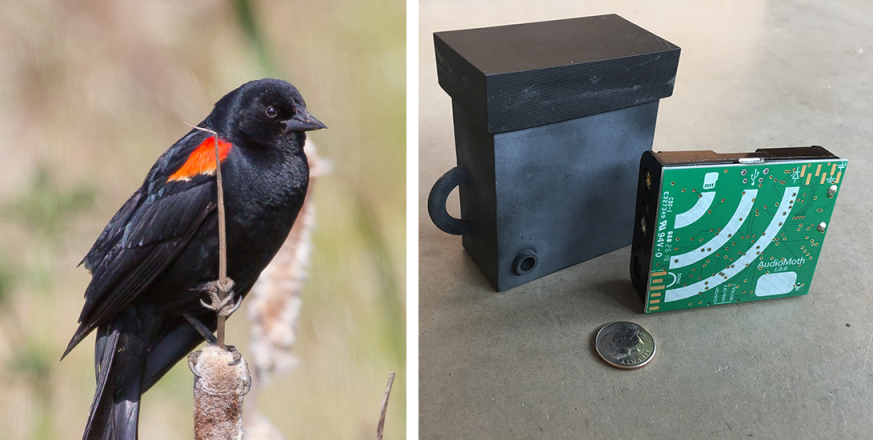Listening in

The ‘Out of the Box - Into the Cloud’ initiative at Jasper Ridge is going to start exploring the soundscape ecology of the various habitats found within Jasper Ridge by deploying autonomous recording units for a week's worth of continual recordings across the preserve. We are also exploring how we can develop these acoustic recorders further by making them more rugged and cost effective for broader applications globally.
Our initial experiment will emplace the recording units 24/7 at 10 locations across Jasper Ridge from March 28th to April 5th. The locations will be clearly marked along the trails closest to them. We will also mark their locations on a map which will be available at the Sun Field Station. There is no need to stop talking as you pass these areas, but please be aware they are recording—including the conversation you may be having as you walk by them.
Soundscape ecology aims to use biological, geophysical and anthropogenic sound to understand how nonhuman species are perceiving the landscape, and how those landscape dynamics may change through time. Using autonomous recording units for passive acoustic monitoring of an ecosystem can cover broad spatial and temporal scales and produces both real-time and long-term data. The bioacoustic signature can be representative of a systems’ health and is an informative species monitoring tool, while also being able to characterize the extent of the geophany (wind, rain, rivers) and anthrophony (human noises) at a site. Collection of "big data" through passive acoustic monitoring creates permanent records, to which rapidly improving algorithms and deep learning techniques can be applied to identify species of concern from the soundscapes and/or create informative bioacoustic metrics for monitoring.
Furthermore, these permanent records can be reanalyzed when new analytical tools become available, providing the means to answer newly conceived research questions well into the future. Passive acoustic monitoring has the additional benefit of having broader detection ranges and sampling a wider range of taxonomic groups than other survey techniques such as camera traps, but they are ultimately complementary in terms of taxonomic group detection. We are excited to further explore these approaches to ecological understanding at Jasper Ridge. The recordings will not only supplement current bird monitoring efforts, but they will also help us create a meaningful tool for use in remote locations globally.



